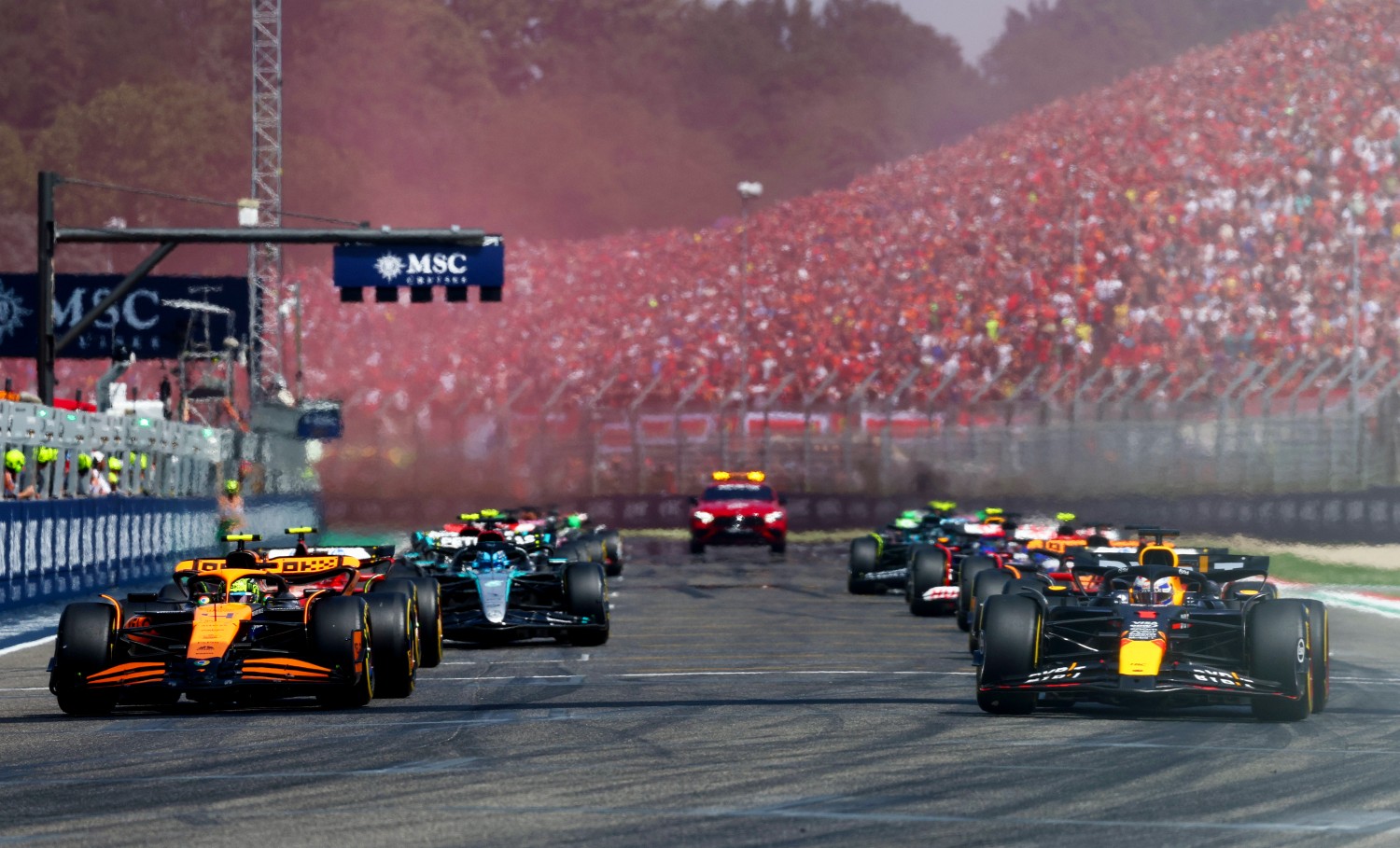Formula 1 News: 2025 Emilia Romagna GP at Imola Preview
The Formula 1 teams are headed to Europe for the first time this season with the Autodromo Enzo e Dino Ferrari, better known as Imola, hosting Round 7 of the 2025 FIA Formula 1 World Championship, the Emilia Romagna Grand Prix. .
Imola became part of Formula 1’s schedule in 1980, as a one-off home of the Italian Grand Prix, before securing a permanent berth in 1981 as the host of the San Marino Grand Prix. It remained on the calendar through 2006 but was dropped when championship organizers were seeking fresh locations. In 2020, when FIA Grade 1 venues were required during the pandemic, Imola stepped in to fill the void.
Imola’s popularity meant it received a rebirth under the new name of the Emilia Romagna Grand Prix, reflecting a region with a vast automotive industry. After an absence in 2023, due to extreme weather in the region, Imola successfully returned to the calendar in 2024.
The 4.9km circuit is a challenging proposition, with a precise approach required on account of its narrow track and limited run-off that features several gravel traps and grassy verges. Overtaking opportunities are restrictive, with the best chance of wheel-to-wheel racing taking place along the full-throttle section that contains the pit straight and several high-speed kinks between the Rivazza and Tamburello curves.
Imola’s Autodromo Enzo e Dino Ferrari is one of the most iconic and technical tracks on the Formula 1 calendar. Situated in the heart of Italy’s Motor Valley, it is 4.909 kilometers long, with 19 corners – ten to the left and nine to the right – and runs anti-clockwise, which puts it in the minority of race tracks worldwide. It’s old-school, rather narrow, with high and aggressive curbs, as well as several natural changes of elevation and corner sequences that alternate between requiring heavy braking and some flowing sections.
After the start comes the Tamburello corner, one of the fastest parts of the track, followed by the Villeneuve chicane and Tosa corner, where the driver wants to have good traction on exit. The Acque Minerali section is one of the most technical and spectacular, while the Alta chicane and the double left-hander at Rivazza complete a layout that rewards precision, stability and overall car balance.
Tire management is affected by the many acceleration and braking points, with tires subjected to a low average load and limited degradation. However, the high curbs can increase mechanical stress, especially on the suspension and tires. Because of the limited overtaking opportunities, qualifying plays an important role, as does finding the right race strategy.
Max Verstappen barely won in 2023. Can he win again driving the Red Bull sled against the superior McLarens?
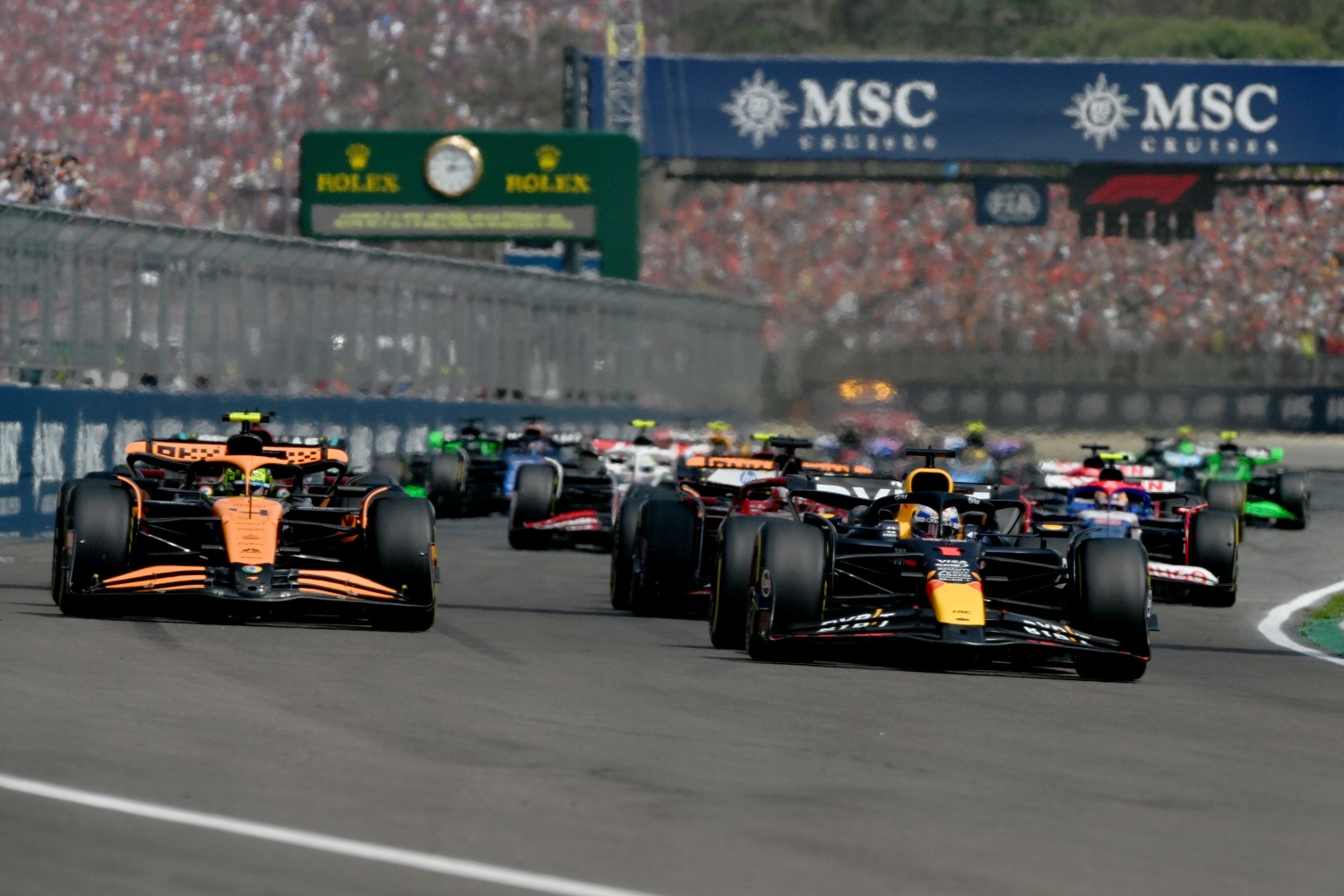
“Imola is always an iconic track to race at and we are excited to be back again after it was cancelled last year,” said Verstappen.
“We have had some great Team results here and it is always interesting to race at a really old school track like this, as it is very technical, with some complex combinations of corners and braking zones. The Team in Milton Keynes and trackside have all been working really hard and I have been back at the factory this week working on the sim.
“It’s nice to be back racing in Europe again too, so we are looking forward to seeing what the weekend brings.”
Located in a scenic part of the world, with rolling hills to the west and the sun-kissed Adriatic coast to the east, the circuit finds itself nestled in the center of an automotive landscape and culinary heaven. The venue, more commonly called Imola in deference to the surrounding town, joined Formula 1’s calendar in 1980 as the Italian round, and a year later was handed the San Marino moniker.
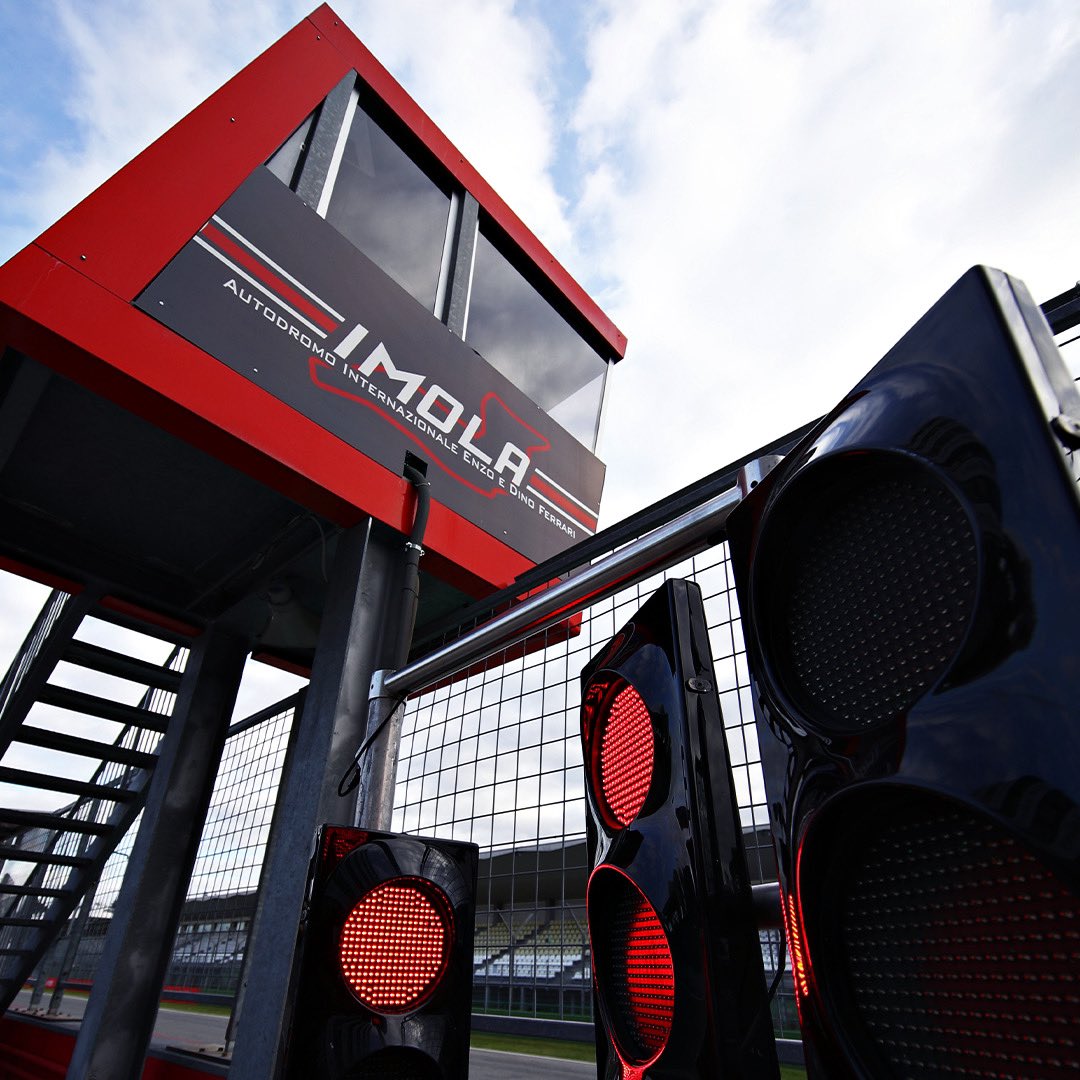
Opened in 1953, the racetrack on the outskirts of Imola is one of the most traditional circuits in Formula One, which returned here in 2020 after a 13-year break. The 4.909-kilometre rollercoaster course follows the natural contours of the Emilia-Romagna hills.
Imola was removed from the schedule after 2006, as Formula 1 went in pursuit of new territories, but it returned as a late stand-in round in 2020 when the world was grappling with the early stages of the pandemic. Under the new title of the Emilia Romagna Grand Prix – the region in which Imola is located – it was again run in 2021, and for 2022 features as the fourth round of the season.
Imola’s circuit boasts a variety of challenges, with a greater than usual emphasis placed on qualifying, owing to the narrow nature of the old-school track and the paucity of overtaking opportunities. The best chance is frequently into the Tamburello chicane, at the end of the lengthy full throttle section past the pit lane. Drivers dart between the verdant parklands and terracotta-colored houses that add to the throwback nature of Imola and give it an unmistakable character.
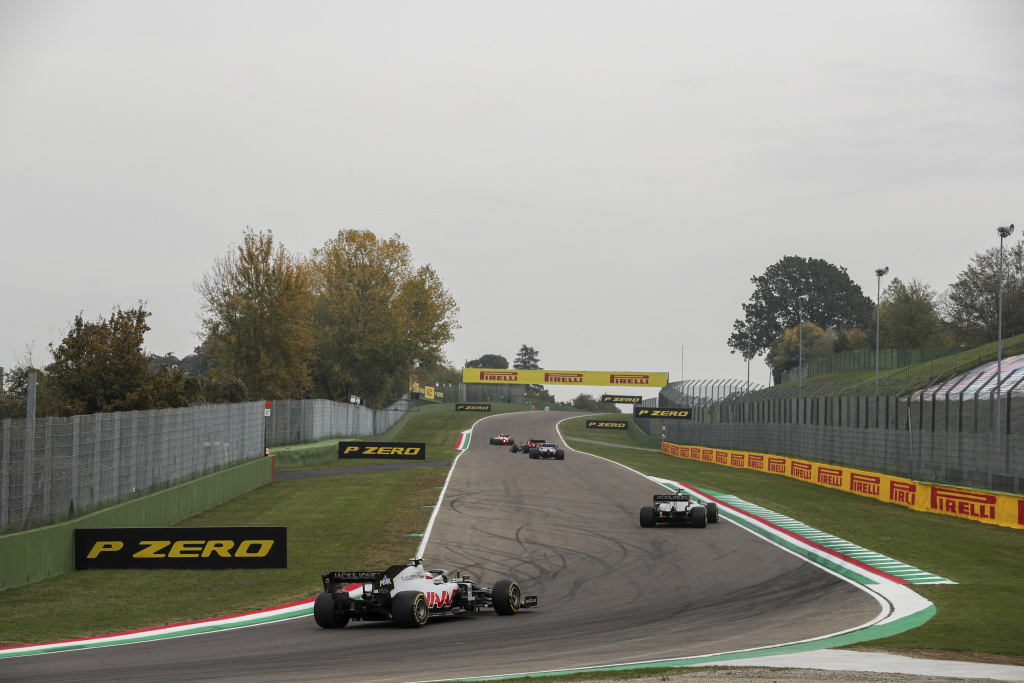
After confirming the race until 2025, as a result of the agreement between the Ministries of Foreign Affairs and Mobility, ICE, the Emilia-Romagna Region, the Municipality of Imola and Con.Ami, the Automobile Club of Italy and Liberty Media, this year’s event has already sold over 120,000 tickets. Tickets are still available on Tiketone, but a sellout is anticipated.
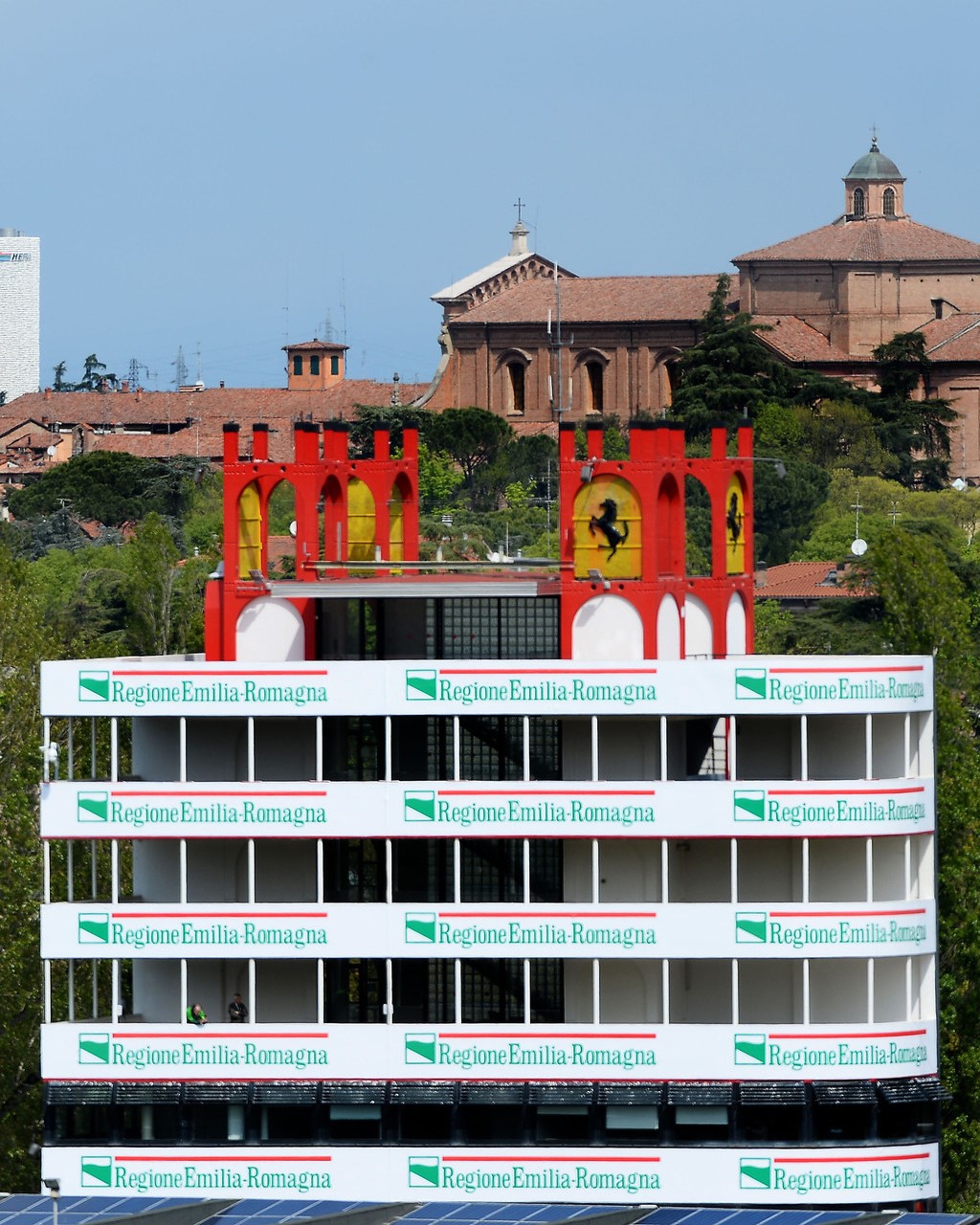
Weekend Weather
FRIDAY
H67° L48°, Mostly Sunny and pleasant, 1% Chance of Rain
SATURDAY
H71° L52° Sunny and nice, 1% Chance of Rain
SUNDAY
H 74° L 54° Mostly Sunny, a 2% Chance of rain
Tires for the Weekend
The first quarter of the season is now done and dusted and, apart from a brief interlude in Canada in mid-June, the European season starts now, and goes on until the Italian Grand Prix on 7 September. The Emilia-Romagna e del Made in Italy Grand Prix takes place at the Imola circuit, named in memory of Enzo Ferrari and his son Dino. This part of the season, which contains the majority of races regarded as the classics of the championship, is thus book ended by rounds in Pirelli’s home country, which has hosted more rounds of the Drivers’ World Championship than any other nation. 74 out of a total of 107 races have been held in Monza, 31 in Imola, while Mugello and Pescara have hosted one apiece.
The compounds
The new C6 compound will make its race debut in Imola, as Pirelli has chosen the softest trio of compounds in its 2025 range for this weekend, with the C4 as Hard, the C5 as Medium and the C6 as Soft. It will be the first time that drivers will run the C6 on this season’s cars as none of them used it in the Bahrain test.
Homologated for use at tracks that stress the tires the least, the C6 could provide even more grip over a flying lap, especially as the Imola surface is less abrasive than average. It’s hard to imagine it being used for a race stint, but data gathered in Imola and then from Monaco and Montreal, will allow the Pirelli engineers to evaluate it for other Grands Prix in the second part of the season.
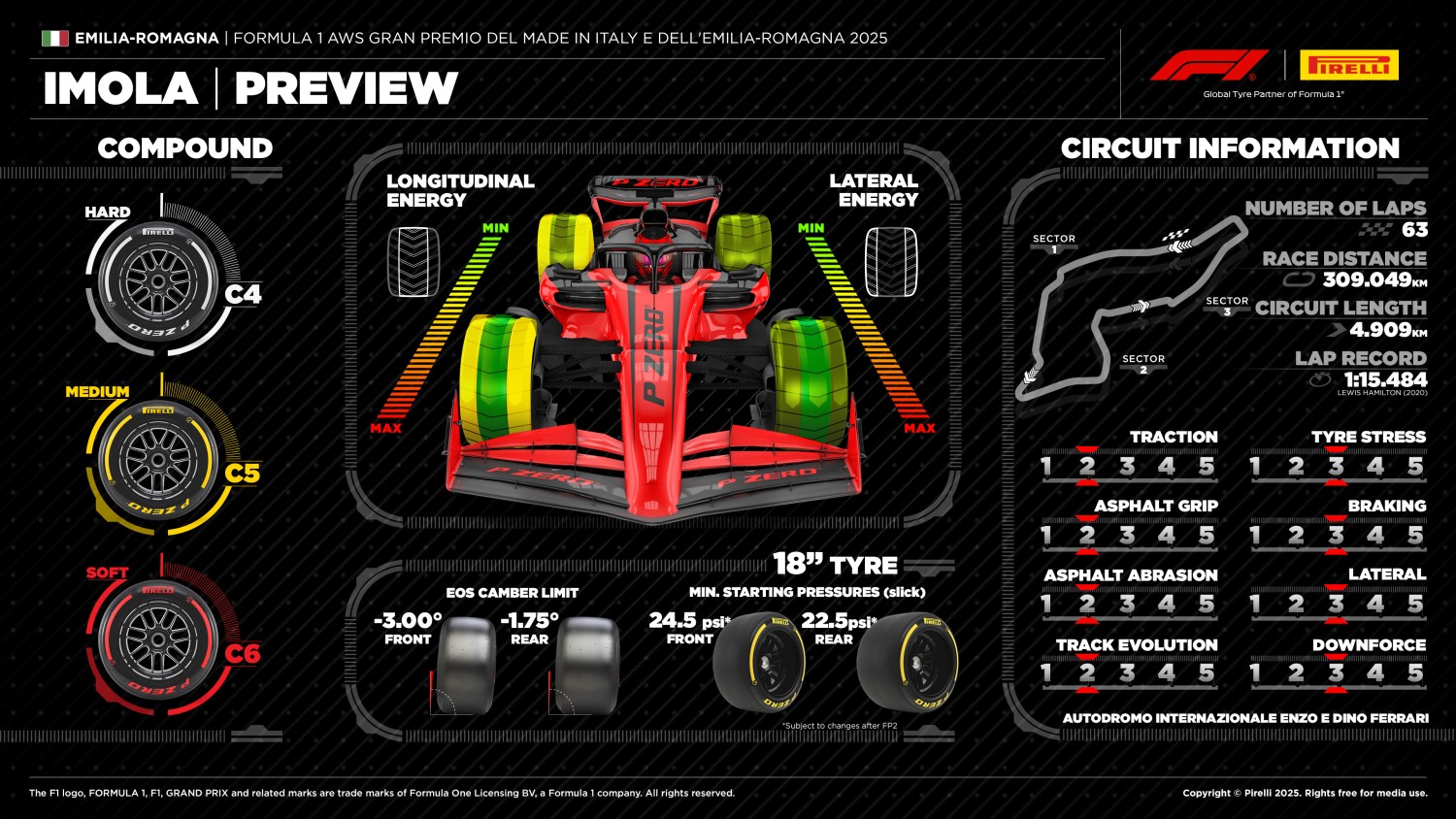
Fact File: Emilia Romagna Grand Prix
- Construction of the Autodromo Internazionale Enzo e Dino Ferrari first started in 1950 and the circuit hosted its debut race in 1953.
- The track has hosted F1 races under three different names: the San Marino Grand Prix, Italian Grand Prix and Emilia Romagna Grand Prix.
- Having hosted a race every year between 1980 and 2006, the circuit disappeared off the calendar in 2007, but returned in 2020 as the Emilia Romagna Grand Prix.
- The team captured its seventh consecutive World Constructors’ Championship with a 1-2 at Imola in 2020.
- The 2023 edition of the race was cancelled due to devastating flooding around the track and in the surrounding region.
- At 548 meters, the distance spent under the pit lane speed limit at Imola is the longest on the calendar.
- It takes drivers nearly 25 seconds to navigate during a stop in the race.
- The race also has the highest level of fuel consumption seen on the 2024 calendar.
- With an average ambient air temperature of 14.8 degrees, the race could also be described as one the coldest of the season.
- Changes have been made to the track last year with gravel traps at T9 and exits of Turns 11 to 15.
- The 2025 edition is getting one step softer than last year with the use of the C6 tire compound for the first time this season.
- There’s a 575-meter stretch from pole to the first braking zone, which is one of the longest on the calendar and means we often see changes of position at the start.
- 71% of the lap time is taken at full throttle, which is quite high compared to most other 2022 F1 tracks. This includes 15 seconds of foot-to-the-floor lap time from the exit of the final corner to the braking zone for Turn 2.
- Imola has an average apex speed of 205 km/h, the third highest on the 2022 F1 calendar, behind Silverstone and Suzuka.
- There’s a wide variety of corner types and speeds at Imola, requiring a car with a wider operating window – the complete opposite to a circuit like Monaco, for example, which has a much narrower corner speed window focused on low-speed turns.
- Because of the wider corner speed window at Imola, more compromise is needed on the set-up details of the car, to enable it to perform better in that varied mix of corner types. A balance also needs to be found between the ride on the bumpy track and the aero configuration for maximum aero performance.
- Imola has the highest accelerations seen all year on corner exit (what we call, gLong forces), due to the very high grip measured on the track’s tarmac and the very straight corner exit lines – unlike the long, sweeping exits you see at other F1 venues such as Silverstone. The average longitudinal acceleration on corner exit at Imola is 1.5g.
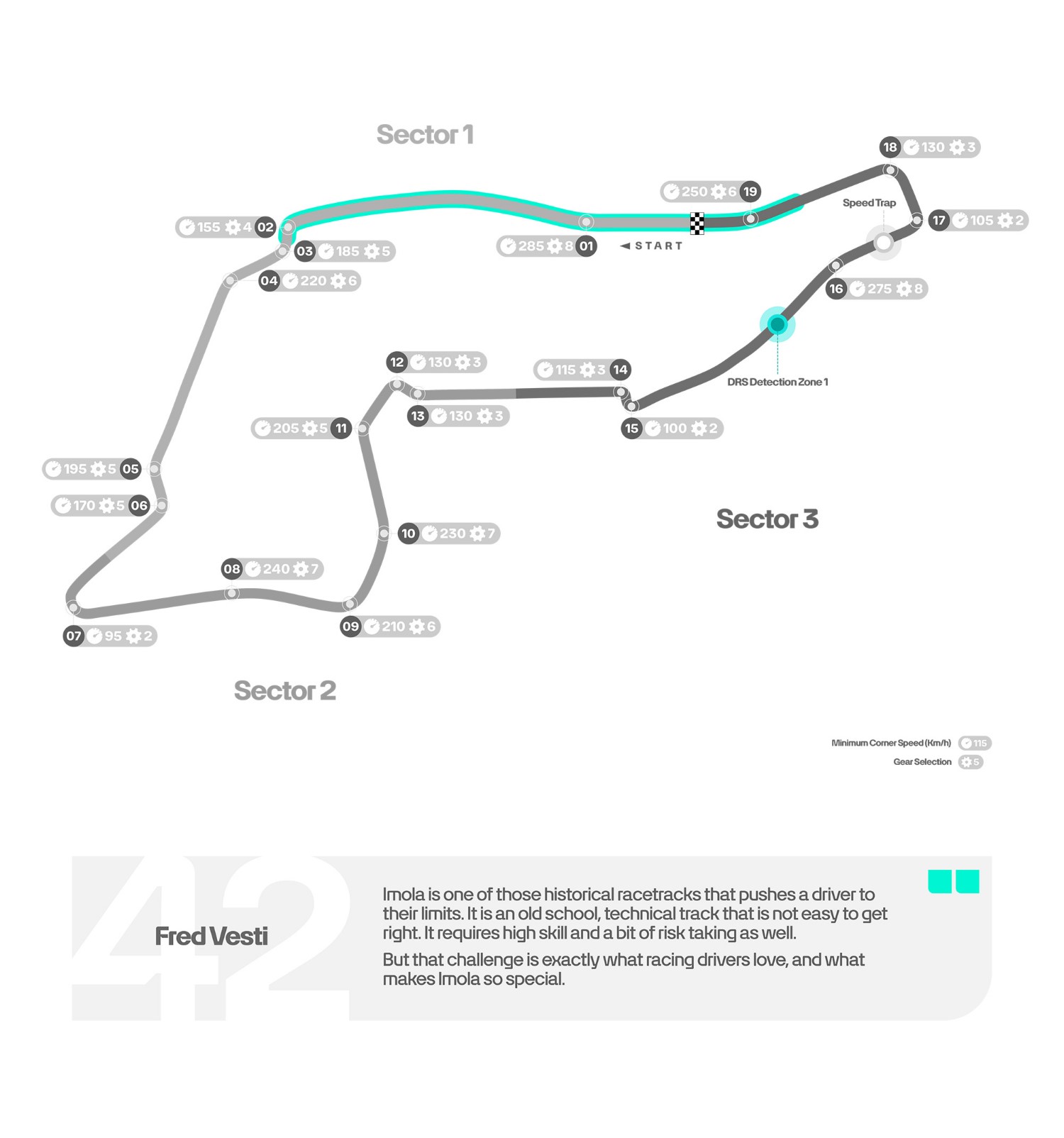
Unlocking the Lap
Running through a beautiful parkland setting, the circuit offers twelve left-hand and nine right-hand corners, situated deep within the Emilia Romagna region. The bumpy Imola circuit is narrow in places, making overtaking both challenging and risky, so strategy is key.
The circuit retains many of the elements that previously made it such a daunting and thrilling race circuit, including the overall fast-flowing nature and unusual anti-clockwise direction. The famous corners at Piratella, Acque Minerali and Rivazza are all as demanding as they ever were and the run from the second part of Rivazza to the chicane at Tamburello is now flat-out as it passes the new pit complex.
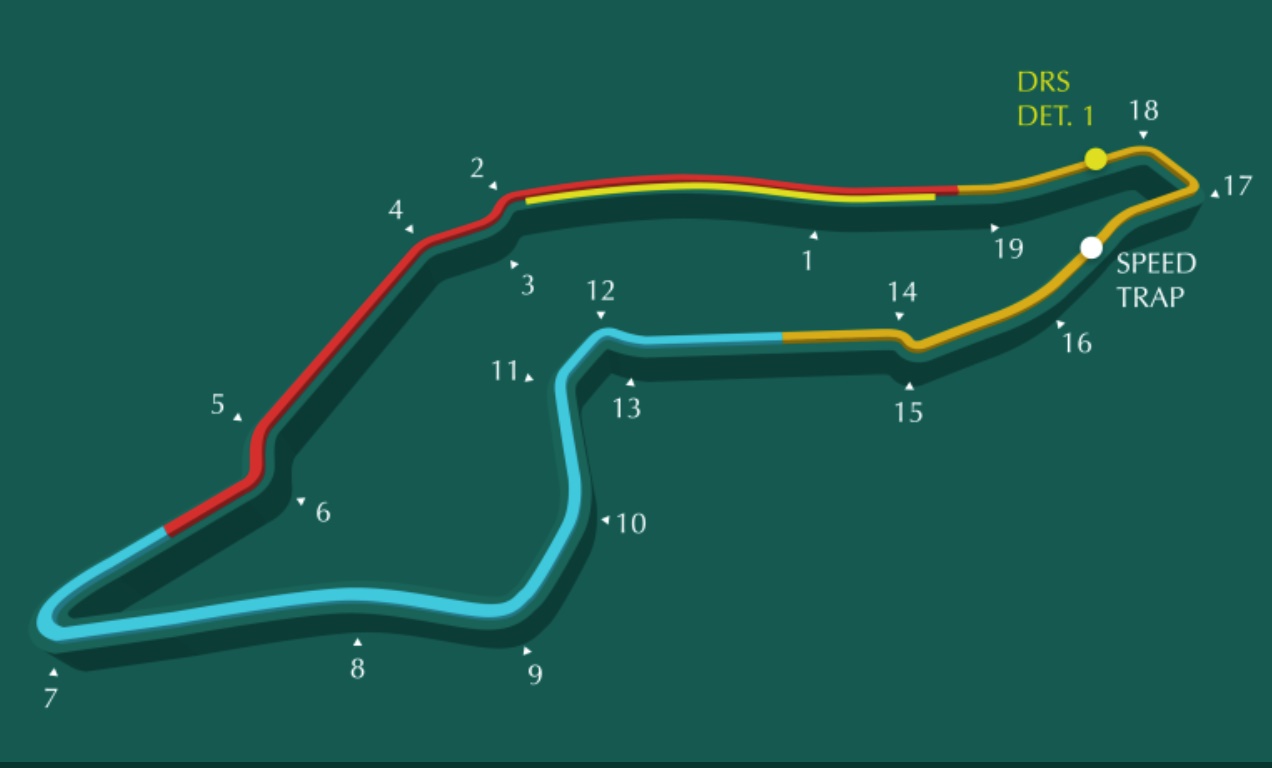
Picking out the key elements of a lap around Imola is no easy feat considering its series of iconic corners, but few impact lap time as much as Piratella and Acque Minerali.
The Tosa hairpin sets up a run to Piratella, and a good exit is key for taking the corner flat out. Drivers tend to pull right on approach, braking lightly, and then accelerating through a 5G corner with little run-off.
There’s no rest, though. Drivers fly out of the exit of Piratella and descend to the flat-out Turn 11 entry, immediately setting the car up for the following corner. Here, there’s the immediate challenge of following straight-line braking with a change of direction across multiple gradient changes at Turn 12.
It’s then followed by a small kink that tightens on the exit at Turn 13 before drivers use all the traction they can to power up towards Turn 14 and continue their lap.
